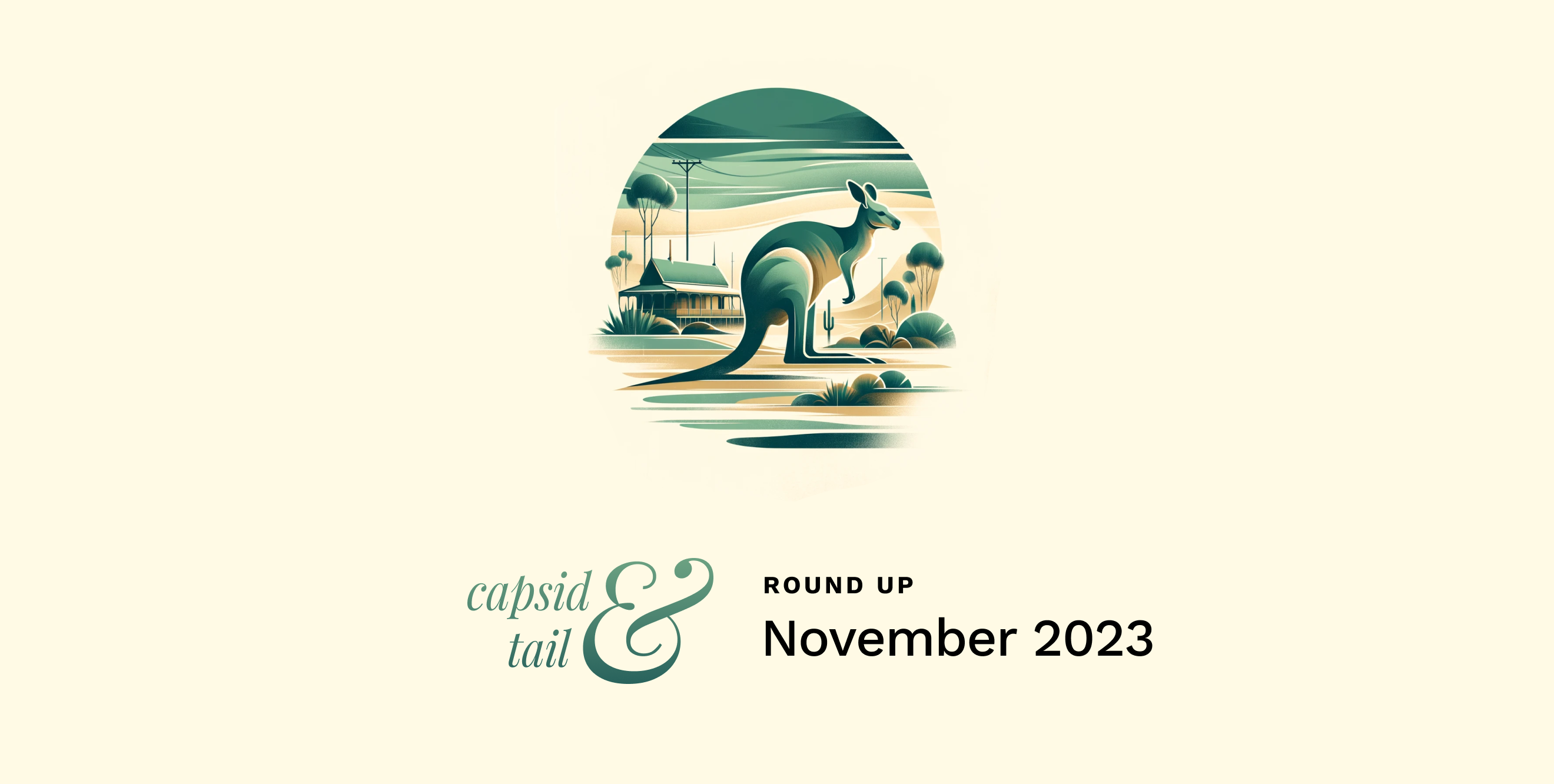Happy Turkey Day, everyone!
As everyone’s crunching for grant deadlines going into the winter (or summer!) break, it’s been a quiet month of guest posts. This means I can write more posts on data engineering and GPT-4 experiments!
We have one phage post from Libby, who visited our Phage Australia lab from the UK, and spent a week exchanging phage manufacturing notes with Jess.
The other two posts are both by me: the first one is the launch of a shared, publicly-editable, work-in-progress Google Sheets of phage resources; the second is a post on all my AI and GPT-4-assisted experiments to extract and work with data.
If you’re using GPT-4 for any kind of lab or data work, I highly recommend you read through this one — it’s full of examples of what GPT-4 does well and poorly!
by Libby Duignan
We were lucky enough to have University of Liverpool postdoc Libby Duignan visit us here at Phage Australia recently, ostensibly to ‘learn from us’ — really, we learned from her! She flew over from the UK and she and Jess spent days in the lab talking phage production and purification, sharing notes and lab hacks, and ripping Jess’ protocols to shreds. It was extremely productive, and we now highly recommend everyone orchestrating their own week-with-a-phage-buddy to help evaluate whether their methods are really as bulletproof and reproducible as they hope. Libby then sadly left us to return to her homeland, but at least she wrote up a nice blog piece on her visit! Super excited to watch what she does next (she will be joining a company in the UK to bring phage manufacturing to life over there!).
by Jan Zheng
For this article, I got to launch an initiative I’d always wanted in the phage world — a completely open, publicly editable spreadsheet of all kinds of phage resources. This could be grants, clinical trials, and bioinformatics tools, all sourced and collected into a single place for everyone to find. The difference between this and Phage Directory is that Phage Directory’s more curated, whereas this is 100% community sourced. So far I’ve filled in some 400+ bioinformatics tools (with the help of AI), and I’ve yet to clean them all up. I’m also going to incrementally fill the other tabs over the next several weeks as I find time.
by Jan Zheng
This article is filled with examples of using ChatGPT for real data engineering and data extraction work. This could be things like extracting text from screenshots or photos using GPT-Vision, processing CSVs, graphs, and tables using GPT-4, trying to read handwriting or QR codes, counting plaques, running FASTA files with GPT-4 Data Analysis, and a ton more. I write about what worked, didn’t work, and what surprised me. The main takeaway is that GPT-4 is very powerful and great for 60% of the work, but lacks a lot of necessary tools to do the rest. In the future we’ll cover “custom actions” and how you can connect GPT-4 to custom tools, code, and servers to go the rest of the way. Exciting times!
C&T Throwback!
Happy (American) Thanksgiving!
I just thought this post was really funny and cute. Our 6th issue of C&T back in 2018 was just a post about how thankful we were for the community. And I think for most years after that, we took American Thanksgiving off every year as a holiday.
It’s different when you’re doing a thing that everyone looks forward to reading, and taking a “holiday” from it (as opposed to an office job where you look forward to no work). Planning, writing, and launching Capsid is A LOT of effort every week (~5+ hours between me and Jess; used to be in the 10-20 hours when we were newbies, and didn’t have automation tools in place), and while we looked forward to taking a break, we also knew we’d let down our readers by not publishing.
Jess and I are super thankful for the phage community — for all of you who share news about your lab, post jobs with us, for sending us thoughtful feedback, for writing amazing Capsid articles about your labs and your research.
It’s been so rewarding writing and publishing Capsid every week, I can’t believe we’ve been doing this for 250 issues, over five years. If this was a child it would be able to walk and talk and go to kindergarten!
Thanks so much to all you dear readers! You’re the ones that keep us going!
(Oh and if you’re extra generous and thinking “how can I help” — we love it when you write for us! Here’s the Writer’s Guide to get started ;)
~ Jan & Jessica <>={






